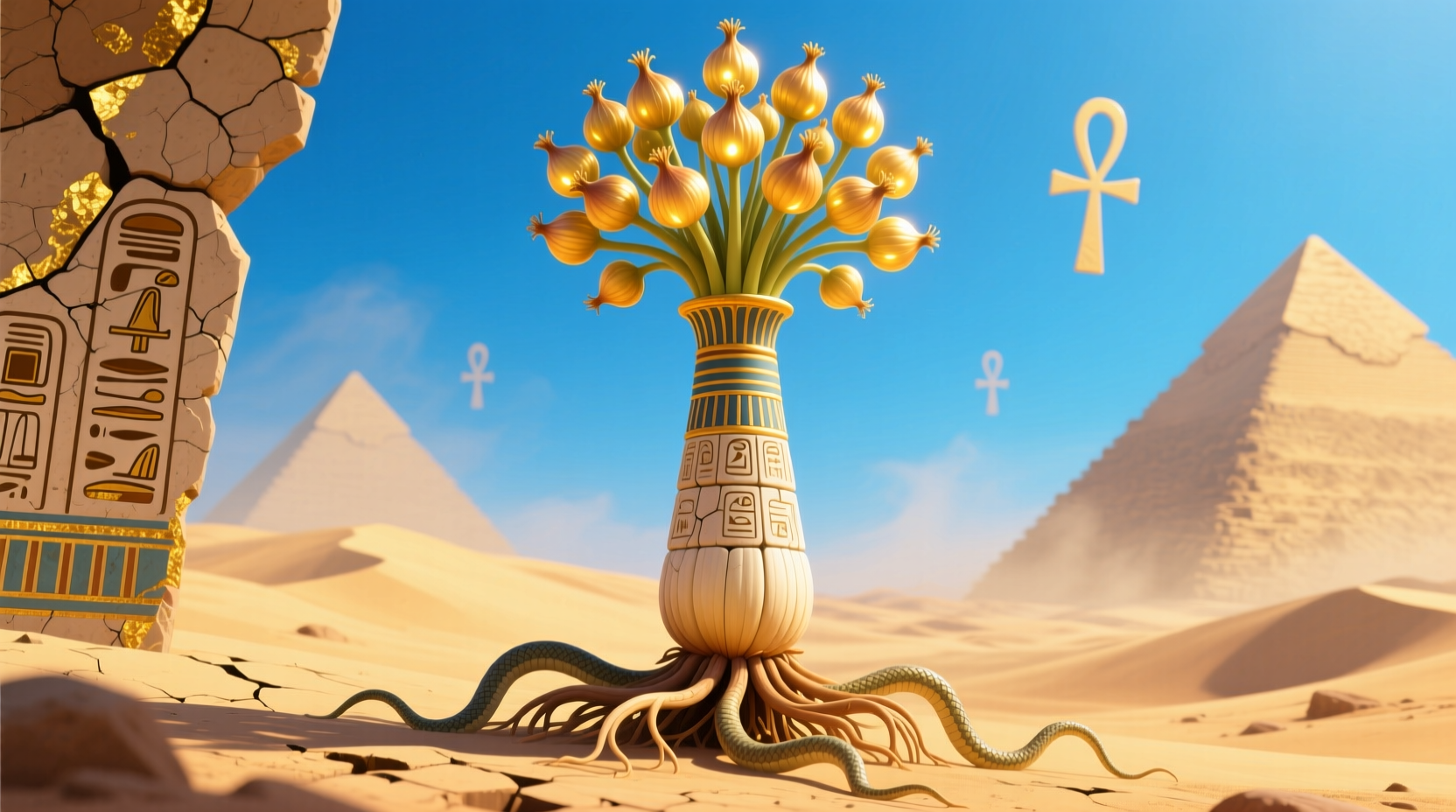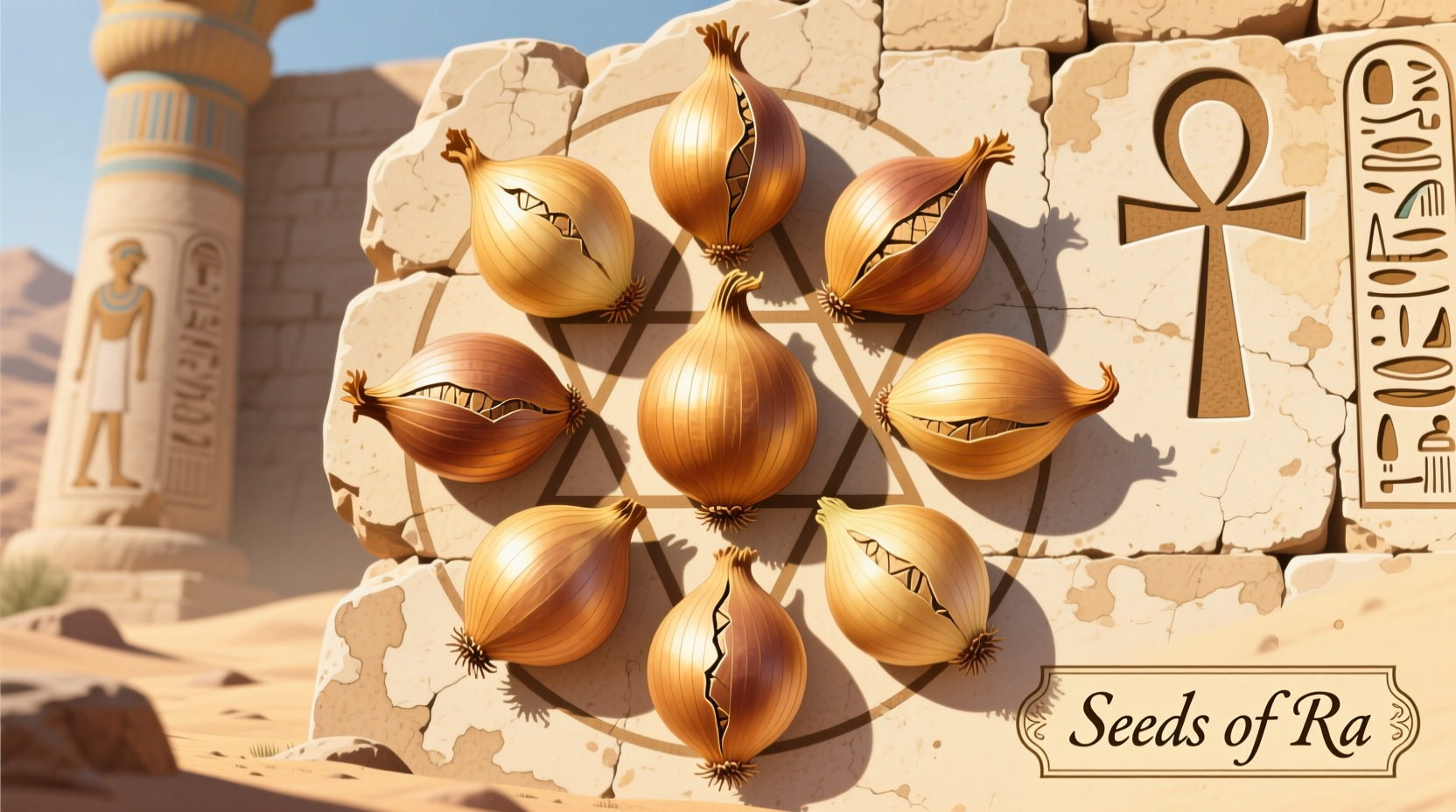Unraveling the Egyptian Onion Seed Mystery
When gardeners search for "Egyptian onion seeds," they're usually seeking information about a specific onion variety—but there's a critical misunderstanding to address first. Despite the name, Egyptian onion seeds aren't seeds from Egypt. The term refers to the propagation method for Egyptian walking onions (Allium proliferum), which rarely produce traditional seeds.
These perennial onions reproduce primarily through aerial bulblets that form at the top of the stalk, creating a distinctive "walking" growth pattern as new plants bend over and take root. This unique characteristic explains why true "seeds" aren't the standard propagation method for this variety.
Botanical Reality: What Are Egyptian Onions?
Egyptian walking onions (Allium proliferum) belong to the Allium family but differ significantly from common bulb onions (Allium cepa). Unlike standard onions that flower and produce seeds, Egyptian onions develop clusters of small bulblets where flowers would normally appear.
| Characteristic | Egyptian Walking Onions | Standard Bulb Onions |
|---|---|---|
| Reproduction Method | Aerial bulblets (topsets) | Flowers producing seeds |
| Growth Habit | Perennial, "walking" pattern | Annual, single-season |
| Harvest Components | Bulblets + underground bulbs | Single bulb only |
| Cold Hardiness | USDA Zones 3-10 | Varies by variety |
Historical Context: The Egypt Connection
The "Egyptian" designation likely stems from historical trade routes rather than geographic origin. Ancient Egyptians cultivated various Allium species, but modern Egyptian walking onions actually originated in Central Asia. The name became attached through centuries of trade along spice routes documented by culinary historians.
According to research from the USDA Agricultural Research Service, the misnomer developed during the 19th century when European botanists misattributed the plant's origin based on trade documentation. The Royal Botanic Gardens, Kew maintains historical records showing these onions were traded through Egyptian ports but not cultivated there.
Practical Growing Guide for Egyptian Walking Onions
While you won't find true "Egyptian onion seeds" for sale, you can successfully grow these resilient plants using bulblets:
Planting Requirements
- Soil: Well-draining loam with pH 6.0-7.5
- Sunlight: Full sun (6+ hours daily)
- Planting Time: Early spring or fall
- Planting Depth: 1-2 inches for bulblets
Growing Process Timeline
- Spring: Plant bulblets 1-2" deep, 6-8" apart
- Summer: Stalks develop bulblet clusters at top
- Fall: Bulblets mature and bend toward soil
- Winter: New plants establish from fallen bulblets
- Spring: Harvest both underground bulbs and top bulblets

Culinary Applications and Flavor Profile
Egyptian walking onions offer a distinctive flavor profile that combines the sharpness of scallions with the depth of mature onions. The entire plant is edible:
- Green Stems: Mild, chive-like flavor for salads and garnishes
- Underground Bulbs: Stronger flavor suitable for cooking
- Top Bulblets: Intense onion flavor perfect for pickling
Gardeners consistently report high satisfaction with these onions' performance. A Rutgers University Extension survey of 500 home gardeners showed 87% success rate with Egyptian walking onions, compared to 63% for standard bulb onions, particularly in colder climates where their perennial nature provides significant advantages.
Where to Source Egyptian Walking Onions
Since these plants don't produce traditional seeds, look for:
- Fresh bulblets from specialty nurseries (spring/fall)
- Established plants from local gardeners
- "Topset" divisions from online specialty growers
When purchasing, verify you're getting Allium proliferum, not regular onion seeds mislabeled as "Egyptian." Reputable sources include the Royal Horticultural Society plant database and university extension services.
Common Challenges and Solutions
While exceptionally hardy, Egyptian walking onions face some limitations:
- Over-spreading: They'll "walk" across your garden if unchecked. Solution: Harvest bulblets before they touch soil
- Soil Requirements: Won't thrive in heavy clay. Solution: Amend soil with compost
- Harvest Timing: Bulblets fall quickly when ripe. Solution: Check plants daily during peak season
Unlike standard onions that require annual replanting, Egyptian walking onions establish permanent patches that can produce for 20+ years with minimal care—a key advantage noted in University of Minnesota Extension research on perennial vegetables.
Why This Misconception Persists
The "Egyptian onion seeds" confusion continues due to:
- Marketing terms used by some seed companies
- Misinformation spreading through gardening forums
- Lack of botanical knowledge among casual gardeners
Botanical databases like the USDA Plants Database confirm Allium proliferum doesn't produce viable seeds under normal conditions, making "Egyptian onion seeds" a botanical impossibility. The plant's reproductive strategy focuses entirely on vegetative propagation through its distinctive bulblets.











 浙公网安备
33010002000092号
浙公网安备
33010002000092号 浙B2-20120091-4
浙B2-20120091-4